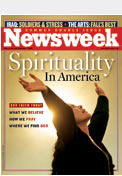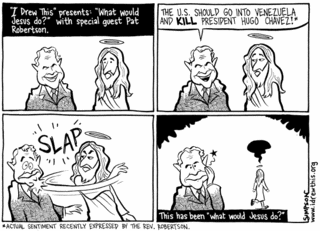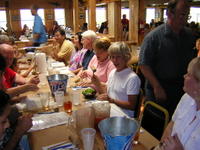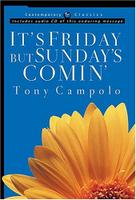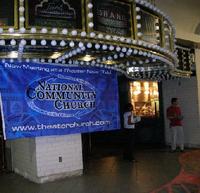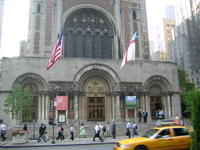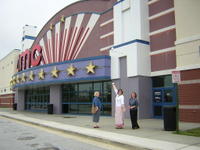What was your first impression as you entered? 
Church of the Beloved practices what some like to call “church in a box.” They manage to pack nearly everything they need for Sunday services into a trailer which is stored somewhere safe during the week. Every Sunday morning they unload the trailer at their worship site (in this case, a school cafeteria in southeast Charlotte), haul everything inside and set up for worship, classes, visitors’ welcome, childcare, coffee hour and Christian education. We arrived early so that we could watch how they set up.
Aware that they were busy, we stayed out of their way. Yet, in between hauling things in or putting things together, various members managed to find opportunities to greet and welcome us. We were very impressed by their high morale, happy spirits, and warm welcome.
How long was the service?An hour and 20 minutes, followed by Sunday School for all ages.
How was the service structured?Holy Eucharist, Rite II.
What did you like best?Of all the congregations we have ever visited, of any denomination, anywhere in the world, Church of the Beloved struck as the most warm and most welcoming. During the course of the morning (before the service, after the service, at coffee hour, in the Christian education hour) we were greeted by all kinds of people who seemed to be delighted to meet us. Welcoming did not seem to be in any organized or coordinated, but seemed to be a central value of the congregation.
-----
They transformed a utilitarian, school cafeteria into an inviting, exciting, tasteful, sacred space by thoughtful placement of a few pieces of furniture and screens. We were very surprised to watch it become, in just a few minutes, one of the more comfortable and attractive worship spaces we’ve experienced.
-----
The pace of the liturgy was relaxed, neither rushed nor dragging. Their attitude toward the liturgy seemed also comfortable and relaxed, neither rigid/formalistic nor sloppy.
-----
The prayers of the people were illustrated: images, no text. For example, when the bidder called us to "pray for all bishops..." the praying faces of the Archibishop of Canterbury, the Bishop of Rome (the Pope), the Ecumenical Patriarch, and local Diocesan Bishop all appeared on the screen.
-----
The sermon was personal, easy to follow, interesting and spiritually centered. They obviously like Jesus.
-----
After the Gospel, before the sermon, a scene from a recent Hollywood film was played. It was neither introduced, explained, nor referred to during the service, but stood on its own. (Nobody said, “Now watch this….”) We couldn’t tell whether those who chose the scene thought it was directly related to the Scriptures of the day, or the sermon – but upon reflection, that didn’t seem to matter. The clip was simply deeply moving, and obviously suggested the Christian themes of redemption, transformation, and eschatological hope. It stirred up deep longings for the Kingdom of God on earth. It made me weep – and eager to hear the Gospel from the preacher.
-----
Afterward, at lunch with the priest, we asked if they showed a clip like that every week. “Every week,” he said. “Just once, after we had been doing this for a while, there was one week when we didn’t show a clip, and we really heard about it afterward from the congregation! One couple, traditionalists who weren’t sure they liked our worship when they first came, were the first to call.”
-----
I have thought quite a bit about the fact that the clip shown at Church of the Beloved seemed to us a Word from God, while the clip shown Journey's Crossing made us feel that our time had been wasted. I'm not sure about all of this, but I suspect that mostly this was the result of the difference in the two clips. Obviously, wise selection is essential. But I think that another part of the difference lay in their respective view of liturgy and our various approaches to liturgy. I'd be happy to discuss this further in some other setting.
What did you dislike?Two things:
First, when the worship ensemble finished their offertory piece, they started a CD so that there would be worshipful music playing while they took communion. I don’t mind silence during communion, and I don’t mind music. What was annoying was that the song wasn’t over when they returned from taking communion – and they just stopped it mid-phrase so that they could begin playing live music again. That jolted us unpleasantly. We think either they should have chosen silence rather than a CD in the first place, or they should let it finish playing through to the end of the song.
Second, they felt the Nicene Creed to be too difficult and off-putting for newcomers, so they have dropped that from the liturgy. I applaud the motivation, but doubt the choice.
What were its greatest strengths that you’d like to import?Their welcoming attitude toward the stranger, their strong sense of community, their strong sense of mission.
If you were looking for a church, would this be it?Yes, definitely.
What did you learn from this visit?Elegant, traditional liturgy, warm interpersonal touches, cutting-edge technology, creative aesthetics, and utilitarian-secular buildings can definitely be blended into pleasing, exciting, Gospel-focused worship.
Is there anything else you want to say?As in every healthy congregation, the public corporate worship service is the small, visible tip of a much larger iceberg. The public corporate worship service, in one sense, is the least significant reality about any congregation. This is as true for the Church of Jesus Christ just as the front porch, front door, and entry foyer of anyone's house are not the most significant realities of that home. Please remember that in these reports, I am describing only the visible tip of that iceberg, and saying practically nothing about their small group structures, Christian education, fellowship, spiritual formation, or mission strategies -- which are by far the larger, and more significant realities of those congregations.
I have greatly enjoyed the experience of corporate Christian worship across a number of cultures, theological perspectives, demographics, settings, musical styles, liturgical styles and preaching styles. I definitely believe that nearly “everything works well” somewhere in some setting, and “nothing works well” universally. I do not believe that one size fits all, nor that everyone should do it the same way, nor that everyone should necessarily like everything. There is definitely room for personal preferences, tastes, and varieties of opinion within Christianity, yet no room for hostility toward others’ preferences, tastes, or opinions. Having said that, I don’t recall ever thinking before, “Now THAT is what I have in mind that worship should be.” Until visiting Church of the Beloved.
This is my opinion; I could be wrong.
The Lord be with you.
